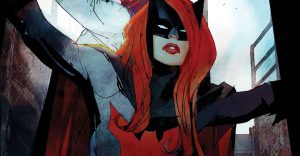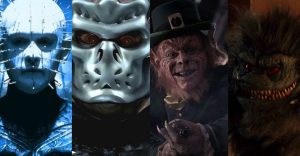Halo TV Show: 10 Key Things Missing From The Show

After years of waiting, Halo has finally gotten a proper live-action adaptation, this time on the Paramount+ streaming service. It’s a smaller-scale venue to tell the story, but the production values and budget are top notch. However, the first episode “Contact” has left many critics and fans feeling underwhelmed.
Part of that can be attributed to certain key elements missing from the TV show. Some of these might turn up in later episodes or seasons, while others should have been introduced right out of the starting gate. Either way, the lack of these defining Halo characteristics can immediately be felt.
An Actual Halo

With a name like Halo, the titular installation will need to make an appearance at one point or another, but that still isn’t etched in stone. The first episode revealed what appeared to be Forerunner technology, which will undoubtedly be used to tie in the Human/Covenant conflict with the installation rings.
However, it’s also possible that the actual Halo won’t be glimpsed until next season, if the first episode is any indication. With only a handful of episodes in its debut, the show needs to focus on establishing the Human/Covenant conflict before it gets too far ahead of itself.
Sergeant Jackson

One of the coolest and most beloved characters in all of Halo history is undoubtedly Sergeant Jackson, a cigar-chewing leatherneck who throws himself into every battle without hesitation. So far, Jackson has not turned up in the TV show, but there’s still hope that he’ll emerge before the season ends.
Of course, it’s also possible that Jackson gets introduced in season 2, but until that happens, fans will be clamoring. Without Jackson in the mix, the show will have trouble establishing a comedic tone to offset both the Master Chief’s gruff personality and the dark nature of the story.
Proper Chronology

The Halo TV series begins in the year 2552, but that’s a far cry from the game franchise’s established timeline. In that universe, 2552 represented the end of the Human/Covenant war, with an all-out assault on the Prophet of Truth to prevent him from activating the remaining Halo rings.
In the show, things haven’t even gotten started yet. There’s no discovery of a Halo, no understanding of Forerunner history or the lengths to which their technology grew, or any indication that the terrifying Flood even exists. There are many plot points that Halo Infinite players needed to know before starting that game, and those same plot points could – and should – be applied to the TV series.
No Fleet Admiral Hood

Fleet Admiral Lord Terrence Hood was the commander of the UNSC Home Fleet, and his presence in the game timeline was an important one. He’s essentially the George S. Patton of the Halo franchise; a keen military strategist with a cool-as-a-cucumber disposition, even under great stress.
Without an actual guy like Hood in the picture, the UNSC feels a bit disjointed and rudderless. Pinning the entire command structure on Captain Keyes, Admiral Parangosky and Catherine Halsey is a bad idea, so it’s best that Hood’s character touches down in the next few episodes in order to provide a full-fledged military presence.
No Arbiter

The Arbiter was a Sangheili elite introduced in the second installment of the game franchise who served as a counter-narrative to the Master Chief’s quest. That character would go on to play a vital role in Halo 3, one of the best campaigns in the entire series, solidifying his race’s uprising against the Covenant Prophets.
Instead, the character of Makee has been introduced. She’s a human female who was spared by the Covenant and raised under their doctrine, but it isn’t yet known what part she’ll play in the larger narrative. Substituting a human for a Covenant alien was probably unwise, but perhaps the writers will be able to make something of her in future episodes.
No Flood

It’s a bit unfair to point out the lack of the infamous Flood in the show, but they may still turn up at some point. After all, the Halo rings were designed to contain the spread of the Flood throughout the galaxy, and it would make little sense to exclude them from the future narrative.
However, the first Halo game was quick to introduce the Flood as the real threat to both Human and Covenant forces. It’s doubtful the show will establish that arc any time soon, but fans are undoubtedly waiting to see how this monstrous parasite is represented in a live-action environment.
An Established Human/Covenant Conflict

By all indications, the war against the Covenant hasn’t even started to any great degree, which is a massive contrast from the game timeline. There, the Covenant had spent decades locked in a genocidal campaign against humanity, pushing them closer and closer to the edge of defeat.
As such, there’s absolutely no indication that humanity knows who or what they’re dealing with. Even the insurrectionists attacked by the Covenant in the opening action sequence are baffled by what they’re seeing. If the show followed the game’s timeline, the Covenant would have been a constant dinner table topic.
The Correct Version Of Reach

The opening act of the first Halo episode mentions that UNSC HQ is located on Reach, which is completely different from the game. In that universe, Reach was a colonized planet where titanium was mined and shipped off-world, and many corporations and entities had a stake in the local economy.
It’s possible that the TV show’s version of Reach will be used to showcase a catastrophic battle between the UNSC and the Covenant, but this would defeat the purpose. The Covenant originally came into conflict with humans on Reach whilst searching for an ancient Forerunner artifact.
The Real Master Chief

Critics and fans aren’t too impressed with the debut episode of Halo, and a lot of criticism is being thrown at the Master Chief, played by actor Pablo Schreiber. The fault is not his, but the way the Chief was written, which is altogether different from his game counterpart. A quick look at the Master Chief’s best Halo quotes is surefire proof of the discordance.
Many people are drawing comparisons between the Chief and Din Djarin from The Mandalorian, and for good reason. Side-by-side, they are nearly indistinguishable in terms of demeanor, right down to the removal of their respective helmets. This has already alienated a large swath of the fan base who wanted the Chief to remain in helmet and just as stoic and humorless as the pop culture icon from the games.
Halo Expertise

Those involved in the creation of the Halo TV show have caught flack for openly admitting that they have never looked at the games when it came to their adaptation. Some have suggested that this is a net benefit, but many fans aren’t seeing it that way, especially given the fact that Halo is one of the best first-person shooters of all time and an icon in its own right.
Halo lore is incredibly complex, dating back tens of thousands of years. The refusal on the part of the showrunners to adapt that material properly is a massive risk that may not pay off. With the first episode currently getting a lukewarm critical reception, it remains to be seen whether branching off on a separate canonized path will pay dividends or bankrupt the show altogether.
About The Author

















